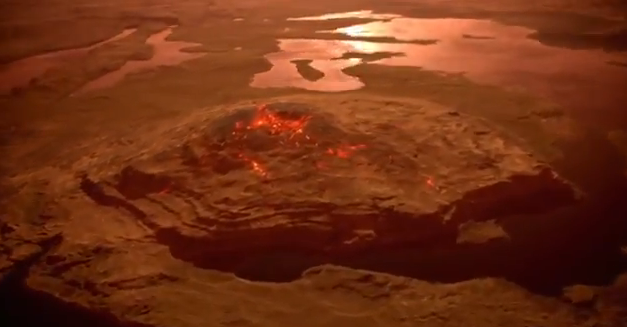
Astronomers have identified a lot of celestial bodies in numerous solar systems, but getting to them is another matter. Thanks to science and its super-powerful gadgets, we still have an idea what many of them are all about.
Here’s what the surfaces of 10 extraterrestrial worlds look like.
Number 10. Titan. Methane rain falls heavily in a lot of areas of the Saturn moon. At times storms even brew across its desert-like equatorial region.

BYPASS THE CENSORS
Sign up to get unfiltered news delivered straight to your inbox.
You can unsubscribe any time. By subscribing you agree to our Terms of Use
Number 9. Gliese 667 Cc. Sunset on this exoplanet may look similar to Earth. Among the biggest differences however, is that on Gliese 667 Cc, one would likely see its three suns in the overhead sky.
Number 8. Kepler 10b. When discussing the sun-facing side of this planet, people often use words like ‘hell’ and ‘blowtorch’. It’s so close to its star that it has an ocean filled with scorching lava and a surface temperature high enough to melt iron.
Number 7. Mercury. In short, it’s bumpy. Eons of being pummeled by runaway asteroids and such have left the poor, tiny planet riddled with deep craters. While many of the universe’s worlds have the benefit of an atmosphere to slow down impact objects, Mercury is not so fortunate.
Number 6. Venus. It and neighboring Earth have a lot of similar features including canyons, volcanoes, and mountains, but time has treated them very differently. Some say Venus lags behind our planet a bit, and thus is in a different geological phase.
Number 5. Europa. Not unlike a skating rink, this moon of Jupiter is covered by a solid layer of water ice. Its surface isn’t perfect however, as it does have numerous fractures.
Number 4. Kepler 16b. Despite the fact that it has 2 suns, the surface of this planet is likely cold and barren. Temperatures are estimated to drop as low as minus 150 degrees Fahrenheit.
Number 3. Comet 67P. This speeding ball has boulders and sand dunes much like Earth. It also appears to be subject to landslides.
Number 2. Mimas. The surface of this inner Jupiter moon tells a tale of survival. One of its many craters measures a whopping one-third the width of its diameter. Scientists marvel at the fact that whatever made the divot didn’t shatter the whole thing.
Number 1. Kepler 78b. This roughly Earth sized planet is believed to have rock and iron deposits but any similarity ends there. It’s extremely close orbit to its star not only leaves surface temperatures 2 thousand degrees hotter than our planet, but has also turned the surface into fiery molten lava.
Which celestial body do you think has the most interesting surface?
Latest posts by Royce Christyn (see all)
- Irish Slaves – What The History Books Will Never Tell You - November 1, 2017
- Government Op Who Predicted Super Bowl Score Warns Of Nuclear War - February 18, 2017
- Video: Why Voting Doesn’t Change Anything & Democracy Is A Lie - May 7, 2016


Be the first to comment